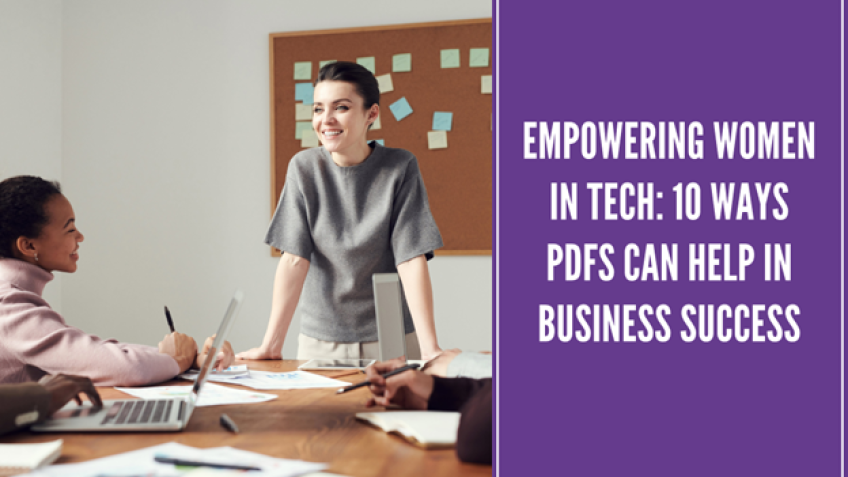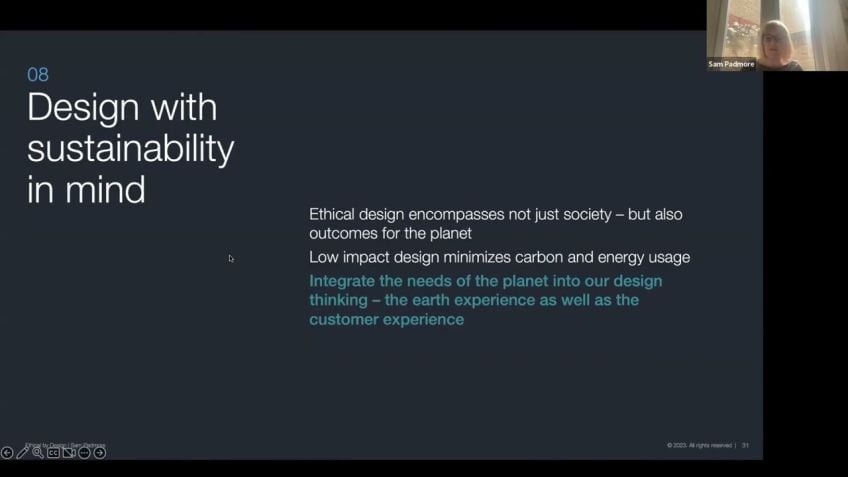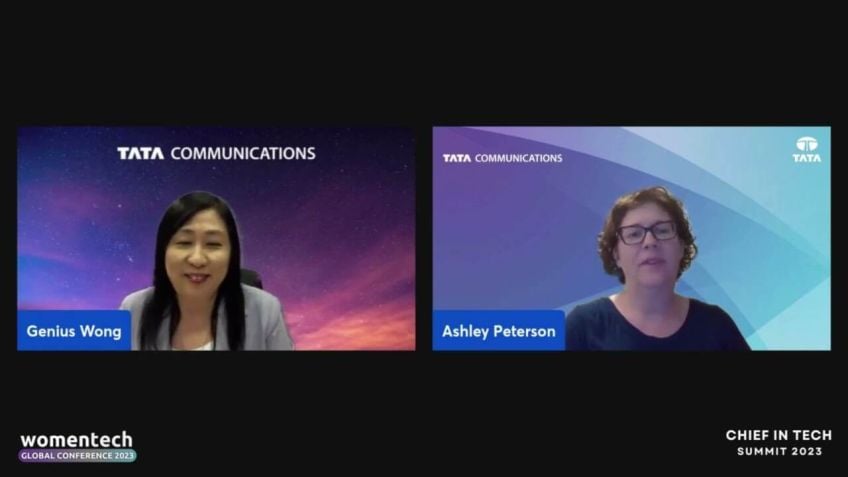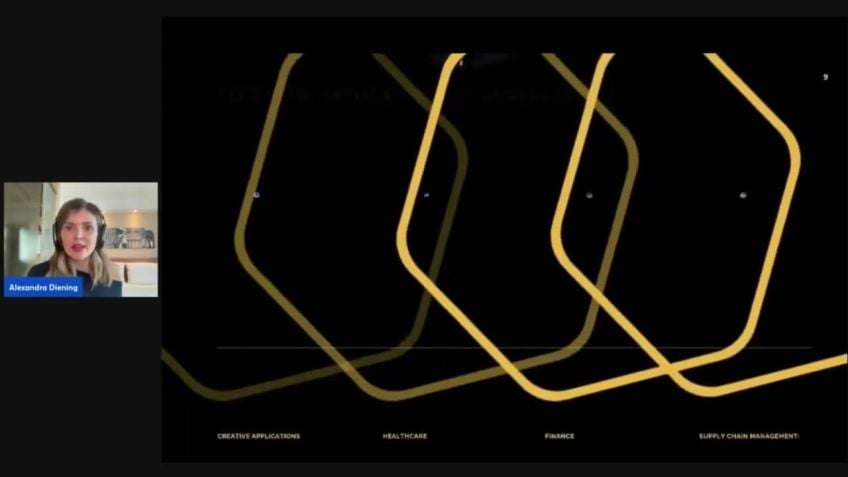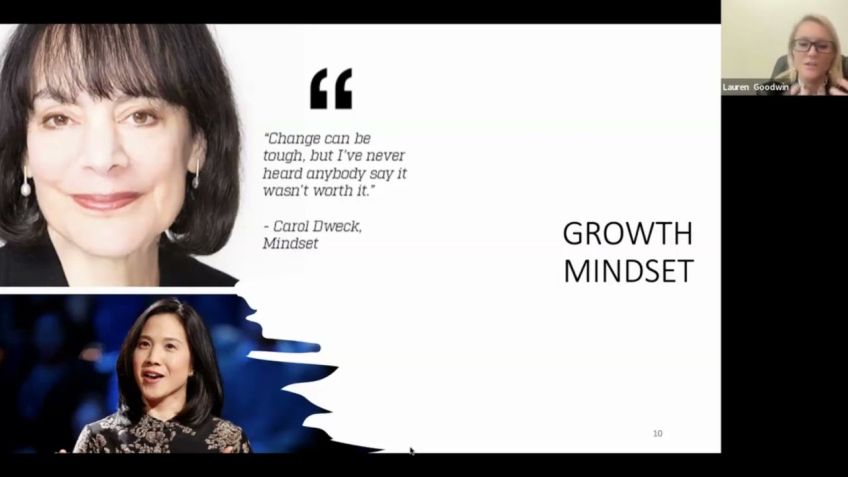Technology for the Care Economy: Are you prepared for the Silver Tsunami? by Chia-Lin Simmons
Technology for the Care Economy and the Upcoming Tsunami
Hello, I'm Shalyn Simmons, CEO of Logic Mark, with over 26 years of tech industry experience. Today, I'd like to discuss the inevitable tidal wave approaching the care industry and the role technology can play.
From AI in Retail to Care Economy
People might find it surprising that I’ve transitioned from an AI company for the retail space to a company providing medical alert, personal emergency response systems. As the CEO of Logic Mark, I've been striving to improve the lives of our elderly population and contribute positively to what is generally referred to as the care economy.
The Sandwich Generation
Drawing from my personal journey, like many others, I found myself being part of the so-called 'sandwich generation.' Characteristic of this segment, I was balancing work, raising children, and caring for my elderly parents remotely. From an all too personal perspective, I became acutely aware of the immense challenges the care industry faces.
The Reality of Falls Among the Elderly
One eye-opening statistic I discovered is that one in four people aged 65 and over fall each year, and less than half tell their doctors. Once someone experiences a fall, their chances of falling again double. This alarming fact sparked my interest in developing technology aimed at improving safety for our aging population.
The Silver Tsunami
When I reflect upon my career, it's evident that timing plays a crucial role in the success of a company. The 'silver tsunami'—referring to our aging baby boomer generation—is not only approaching but is indeed upon us. This demographic shift, combined with a severe shortage of caregivers, underscores the urgency to develop more efficient, effective, and user-friendly technology for this growing elder population, which has been underserved for far too long.
Addressing the Consultations with Technological Advancements
Designing for Wearability
One key factor I emphasize is designing products that people want to wear. Wearability is crucial for adherence to use. We need to depart from the traditional medical-look-devices and create attractive ones, just like we see in popular wearable tech products.
Improving Fall Detection
Technology needs to improve the accuracy of fall detection considerably. Today’s devices largely use speed and tilt data, resulting in false alarms that can hinder user adherence. For better predictions, we need to integrate more data points, such as distance and sound, along with speed and tilt.
Preventing Falls with Connected Data
The future of the care economy, especially the silver tsunami, revolves around data connectivity. Current data streams are largely isolated, limiting potential beneficial impacts. If integrated correctly, these data can help us predict the likelihood of falls, providing incredible benefits for our elderly population and those caring for them.
Making Products Caretaker-Centric
I envision a future where the technology driven care economy places caretakers at the center. Machine Learning and advanced algorithms could predict fall incidences, providing caretakers a chance to take preventative action. Caretakers then become the control center, armed with actionable data and analytics.
Bridging the Gap with Technology
There's a pressing need for advanced and efficient technology in the care industry. The imminent silver tsunami, coupled with labor shortages and isolated data, present an ideal opportunity for emerging technology to step in and offer practical solutions.
If you'd like to find out more about the projects I'm currently working on, or if you have any insights you'd like to share in this space, please feel free to reach out. I'd love to hear your thoughts and exchange ideas on how we can better cater to the silver tsunami using technology. I am always open to questions, discussions, or potential collaborations. Thank you so much for your time.
Video Transcription
Thank you so much for attending. And um I wanna just go ahead and launch very quickly into just who I am and um to talk a little bit about sort of technology for the care industry and the upcoming tsunami. And so, um my name is Shalyn Simmons.Um I've been working in the tech industry for about 26 plus years. I'm currently the CEO of a company called Logic Mark. We are one of the largest providers of um medical alert, personal emergency um response systems um in a market today um for and serving a number of clients um in that particular space. And so, um probably what seems really unlikely is if you look at my background that how I would have ended up in a com you know, industry and a company that services day care economy um that in for all intents and purposes also launch into this as well and talk a little bit about sort of aging um aging tech as well and how I ended up there.
So I spent most of my career in a number of sort of um early stage companies from pre C to series D as well as having served a couple of years um as a public company executive at a number of different companies. And so prior to this, I had a early stage precede um a IML company and I was actually working of all things in the retail space building, a IML for recommendation for um clothing of all things. And so how did I sort of end up in this particular space? And how did I end up with a company um where I was, I've been for the last year doing a turnaround for the company and to be serving a company whose corporate mission is radically different than the company I was at, which was to basically help women make, make better decisions and help the industry save money.
Um But to something that is basically speaking to protecting the personal experiences of living life to the fullest. And so, um a lot of it has to do with probably what many of us had gone through during COVID, which is, you know, COVID changed a lot of things for a lot of people. And so what I was seeing was um like many people. Um my personal journey was not unlike so many of us who are in this particular industry, in fact, one in four millennials and more than half of Gen Xers of which I am one of those um is part of something called the sandwich generation. So that means that we are in the midst of the global pandemic and working and doing all those things. We were actually helping to take care of our young ones as well as faced with actually caring for our elderly parents or other loved ones at a time when we weren't really able to be near them. And in many ways, um, this day had already been, um, that sort of, that day has already come for me anyway, because I had, um, lost my own parents and was in a process of actually helping to care for my mother in law remotely.
I am constantly sort of worried about whether or not she was doing ok and whether or not she's fallen. And so I'm sharing some stats here because this is always something that astounded me so much. Um, when I first joined this company and while I was doing research to join this company, which is that, in fact, um, one in four out of, um, people 65 and over actually fall and less than half tell their doctors. And once you fall, once, um, your chances of falling, actually doubles, right. And so that's a heck of a lot of people. And so, you know, that fall actually has great implications in terms of the business that I'm in today. And when we talk about the care economy, because when most of the time when we look at this particular industry, we don't actually help people uh within the first hour of them having an incident, their outcomes are actually 80% worse. Um, you know, when you don't find them within the first hour, that means that they broke a hip and you don't find them until three hours later, their outcomes for recovery is much worse. And this other piece kind of astounded me as well. In fact that basically death rates increased 30% and there's like seven fall deaths like every hour by 2030 which is just a very scary thing, especially as we were going through COVID.
And so when this company came to look for a turnaround CEO, it really made me pause and think about what was happening in the care economy and most importantly, what were the things that were happening in terms of changing demographics and why it was so important. And so, you know, as we look at what's happening here and one of the research that I delve into, and I'm sure a lot of you guys are doing the same thing whenever you look at and taking a new role, which is, you know, you look at what I call the three legged stool of success, right?
You look at, you know, does this company have great people? Does it have good products? And IP and then there's always the sort of third piece of the, the ephemeral pieces, is it, you know, the right timing for the company, um is the demographics and product market fit timing right. It's the piece that's always a little bit more challenging that you have to dig into a little bit more as well. And so what really astounded me was that, in fact, you know, the silver tsunami was actually not only coming but was really already upon us when we talk about the silver tsunami. It's really about the stats. I'm, I'm sharing with you today, you know, baby boomers are aging and so 65 you know, people over 65 are projected to nearly double. And so actually by 2030 more than 23% of our population in the US alone will be 65 and over. And so, you know, along the correlations with this is that not only are, you know, our population aging, but in fact, more and more of us were actually taking care of them, the one in four millennials again, and the more than half of Gen Xers and this population, you know, has been poorly served or underserved by the technology industry for a very long time.
Despite the fact that if you look at the um the data here that they actually are comfortable with technology, 65 per, you know, 61% of them actually own smartphones, you know, 75% of them actually use the internet. Um So they're actually quite more technically savvy than we give them credit for. And when we talk about the care economy overall and not just look at the silver tsunami portion of it. In fact, actually one in four a adult Americans live with a disability. And so there are people who require a little bit additional system potentially as well. And so that figure actually was a major part of a changing demographic that we're facing. But one that somewhat snuck upon a lot of people when we look at it from a tech industry's perspective in my career in 26 plus years, I spent a lot of my time in what we have all termed as emerging technology during connected cars in 2010 before, you know, all the Teslas and connected vehicles are really um part of the mass market um during early days of cell phones in 2005, when really only 35% of Americans own cell phones.
And so when I looked at this particular market, when we talk about the care economy, as well as most importantly, the portion of the care economy that's focused towards the elderly, it's one that when we look at technology, they have not actually had a tremendous amount of success.
And that doesn't seem to be a a good situation when we look at the data again, you know, 60% of all Americans over 50 want to age at home. And so this is actually even pre COVID. And so again, pre COVID as well, the sort of aging at home population labor shortage has been already in the works prior to 2020 20 when COVID hit upon us. And so by 24 we're going to have a shortfall of caretakers for folks who are in home caretakers. And what we found was that as an industry, in fact, that industry pre COVID had a 50% turnaround, which means every time you hire 50% of those people are going to turn over every time. And so that means for every caretaker, they may actually start, you know, be, you know, getting into a situation where they're trending towards, instead of taking one, you know, one person taking care of 10 people who are aging at home, they may be looking at one and 20. And so these decisions about sort of technology that they utilize and this very strong interest in aging at home, um all sort of converge into the silver, you know, tsunami of growing aging population, a shortage of labor and a situation in which potentially more of us might be isolated at home as well and be far apart from our loved ones kind of converge into a situation where it's a little bit of a perfect storm for a situation where technology could really step in and actually emerging and better technology could step in into an industry again that sadly has not done very well.
Um So for those of you who have grown up in the US, um in the eighties, this may have been the a that you might have seen with that very catch or phrase that we all know how by fall and I can get up. And in fact, this is actually the uh sort of the meme um that came out of the Medical Alert company called Lifestyle I call in 1989. And so since then, um you know, I wish I can tell you in fact that things have changed um in this particular industry that on the top, there are made by Bosch is the product that basically like call utilized in 1989. Um What you will see to the right of that is something called the life alert, which is actually the modern day quote unquote equivalent of that particular product. And so, and what you see in the bottom, I'm sorry to say is one of the early products that our company had, we've been around since 2007. And so our products will maybe be a little bit tiny, bit less um antiseptic looking, um probably hasn't evolved as much um as well um before I joined the company last year.
And so that means that is as a whole, actually, this is not unusual what we're seeing here in this screen. In fact, um the technology hasn't truly evolved in the 20 plus years um that in, since the early days of this sort of, you know, health monitoring and medical alerts, monitoring space. And so they came out of the home monitoring service with a call center that monitors your home. And so they had these very rudimentary and medical looking devices that you would wear and you would push that button if you fall. And the modern aspect of it that they add was something called, you know, followers, right? Except that these follow a words, actually don't work very well. In case was my mother in law were one of these devices. And so, you know, she was sitting down a little bit too quickly and tilted a little bit because some of these devices much like your I watch I watch I watch is using the same technology. She sat down accelerometer, gyroscope, sat down a little bit too quickly and tilted. She was 85 you know. So what can I say?
She was at a ramen restaurant with me in Oakland and immediately this device that she was running around her neck, which looks kind of like a small remote control, very unattractive. Went off and said Mrs Becker. Are you ok? And it's screaming at the top of its lungs out of mo like a very, very popular restaurant. She was embarrassed and she didn't really want to wear it anymore. And so when we look at that and we think, why can't we do better? But the reality is, is that we could do better because the traditional PURs industry that I, I call it the I fall and I can't get up business um has sort of still the old school technology products operated by very similar people. And typically their business is not a little bit less about the technology aspect, but the services and the marketing aspect of things are the monitoring aspect of the business. And so the technology, hardware and software typically tends to be sourced by other industries. And so, and then they haven't really evolved the technology, they haven't advanced really too much of the fault detection technology. And that's sort of where the current marketplace sits too. So the traditional sort of business and then we've got what I call the quantifiable self space, right, which is, you know, the fitbits of the world and the eye watches of the world and the pixel watches of the world.
And so they're designed for wearables for people who are as young as 10 or 12 to supposedly a product that would help for people who are older, who are 65 or or older. And so, you know, that development of a hardware product and software that would basically cover that larger range of consumer businesses. When we know that on either end of the extremes, the manual dexterity of that particular user may not be as good as somebody who is between this ages of, you know, maybe 15 to to 55. Um it's become sort of an issue where this quantifiable self space product is really great for the mass market but is it not necessarily good for the aging population from a safety use perspective, from a battery life perspective and any one of those things? And so, and that is the current marketplace, which is either we were going to get these old school products that doesn't really have the most bleeding edge technology that would actually help with detecting falls or actually predicting falls even to something that is maybe really great at having some love a fault detection.
But it really isn't designed with an older person in mind or even a younger person in mind, a super young under 10, right? And so that's really the care economy as we see on today when we look at especially the silver tsunami that's coming. So when we look at that, what does the future say? And I really would love to have this opportunity to get to chat with you guys a little bit more about this. But we see the future as um what we call caring platform as a service or ac a system where you wear connect and you care. And the reality is is that today, when we look at the industry, it's incredibly fractured and sort of self isolated as a data sort of experience. Um We are collecting blood pressure data and every blood pressure monitor product now has an app and they collect the data and then you have that data in isolation or you have your fitbit and has some level of, you know, blood pressure or steps and again, has an app and sits in isolation.
And so, um and that's great. And so when we look at that, when we look at sort of connected data, um one of the things that we think needs to happen in the future is that yes, everything needs to be connected. It's my third bullet in, but it does, it cannot constantly sit in an isolated data pod. They actually have to interact with each other or be able to be shareable um in order for it to be actionable. And but first and foremost, I mean, the thing that I always keep in mind is that you have to design something for wearing um like pharmaceutical companies and the way they think about sort of adherence, you know, they talk about, it's great that you have access to provocol you want to be able to actually make sure that people are taking that drug that they're supposed to be taking so that they can actually have the best health outcome in our particular case, you know, you have to design things that people want to wear.
And we are talking about the boomer generation that has large incomes, they have taste, they're not dead, they want to wear, things are attractive. Why should they be looking at wearing this? This is horrible. So shouldn't we be designing things that look beautiful, like an eye watch or anything that you would want to wear in your body because wearing it equals adherence for health, right? But if they don't want to wear it, you're not going to be able to get fall detection. Secondarily better fault detection is absolutely crucial. When we talk about that, everything from a device perspective today utilizes accelerometers and gyroscopes, speed and tilt. We think that there is a better sort of way to look at data for anybody who's interested in a IML you know that more than two points of data is required to basically make better predictions. You need three points plus, right. And so for us as a company, we are absolutely interested in this because we actually own a patent for barometer. Being able to tell basically from the altitude perspective. If you are sitting, if you're going from here to here at a speed and tilt, this could be just that you walk, you're sitting down too quickly because the distance isn't quite a fall.
And so you want to be able to actually pull together data um such as distance along with speed and tilt or dis distance, speed, tilt and sound. Because if you crash and you fall, that sound is different than if you sat on a chair or something like that. Right. Better fall detection is necessary because if it goes off and you're not fallen, you're interested in wearing it again, going back to bullet one from an adherence perspective is absolutely less. And So we think that again, if you could think about sort of where the future of the technology needs to be for those who are aging and the silver tsunami that's coming ahead. We also want to see prevention. So all of this data sitting in pods and isolated pods not working together means that we cannot help to look at predicting falls. That's coming. We believe that if you look at some of this data and you look at the way that people are like moving and their gait and their sort of predictability in terms of how their movements are, in terms of a daily sort of usage, we can actually look at doing things like digital twins where people of similar patterns had to fall incidence.
And so we might be able to actually help deal with predicting a potential fall incidents and being able to communicate that to not just, you know, myself or anyone who's a loved one, who is caring for, you know, parents and so forth, but also to professional health care taker as well.
Data will actually help us make better predictions. And that's what we need is a future for aging tech. Um but also needs to be care centric caretaker centric today when our parents need help, that that sort of suddenness comes upon us. And so we're seeing a lot of caretakers pulling things together at the last minute because these things don't work well together again, isolated data and so forth. And so technology in the future for taking care of the silver tsunami. And those we love need to be actually much more caretaker centric because those are the people who need to help have that data. And finally, we believe in what I call the multi-layered protection and it takes a village perspective. Um you know, it used to be that people lived um with larger family sets. And so there are neighbors who help each other and we no longer can have that COVID also taught us that as well. And so we need that multi layer protection of having a I having family, having a call center, having 911. And to know that our loved ones, even if we fall apart, we're far apart from them, have the capability to get help with, you know, for whatever needs that they have and that, you know, as a platform or as a service that we can actually connect, not just that sort of initial consent, like circle of, you know, people who can care for our loved ones, but potentially we can extend it to village for people that we're sharing a platform with to actually help us out as well, the classic sort of village experience.
And so we live in a social world today, you know, it's a high probability that we can actually do that as well. And so that's some things that we really think about when we think about sort of the coming tsunami and where the care economy needs to go. And so that's the end of my presentation. And I would love to take a few minutes to answer any questions that people might have. How about hearing technology advancements other than hearing aids? Absolutely. Yeah. So, I think that's a really interesting thing and we think a lot about that. I mean, today, actually, it's fascinating when we dig into this aging technology space where um we're actually seeing folks who are getting out of hearing aid technology because all of us are going like ear pods today, right? And that sort of enhancement of sound, the isolation of a crystal clear sound from talking and being able to sort of block out what stereotypically hearing aids do, which is that sort of the um white noise of restaurants and so forth. Um Those we think are in absolute sort of development. In fact, I know three other companies and have invested in one um as a sort of angel investor myself um in, in terms of basically increasing hearing technology.
And ironically, it's not just for the aging as well because as we sort of as a population have um sort of adapted to our environments because of contents and so forth, we're actually seeing some bits of hearing loss a little bit earlier than one would expect. And so um that sort of hearing technology, um we're seeing a tremendous amount of caring economy as well. Um Please feel free um to email me if you guys have any questions. I know that I only had 20 minutes and I wanted to sort of um open that up if you guys had any Q and A s. Um but if not feel free, please to contact me anytime and I look forward to chatting about this topic with everyone. So thank you so much for your time. I appreciate it.

